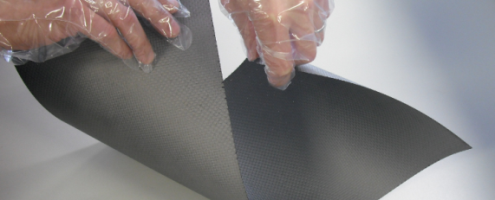The conditions inside the furnace were as follows:
Temperature – 850oC
Atmosphere – Oxygen
Time – 1.5 hrs
Graphite tube – 110/100mm x 120mm long
When the surface roughness of the graphite tube was examined and measured it was found that the majority of the protection was afforded by TokarecFlex. However, as TokarecFlex is permeable to gases, graphite foil was added to afford a little more protection. The difficulty with the graphite foil was that it could only be used on its own if it was fixed in some way to the surface of the graphite tube. In this case the tube surface was further damaged but the Tokarec Flex needed no fixing as it naturally wanted to open out and therefore press itself against the tube.
Our Tokarec product has very low impurities that allow it to be used in chemically sensitive processes where the introduction of contaminants must be kept to an absolute minimum. TokarecFlex is exactly the same with impurities less than 20ppm.
Graphite foil, on the other hand, can have as much as 1000ppm impurities contained within the product. This could mean that in some furnaces there should be “dummy” runs or burn out cycles performed prior to actually running the heating/processing cycle for real. This is an avoidable expense if the lining product needs no outgassing, as is the case with TokarecFlex.
The physical properties have been measured and can be seen in this table. A feature of the material is the high strength value despite the thickness of the sheet.
| Property |
Unit |
| TokarecFlex |
Graphite Foil |
| Thickness |
mm |
0.3 |
1.5 |
| Apparent Density |
g/cm³ |
1.2 |
0.5~1.2 |
| Flexural Strength |
MPa |
200 |
n/a |
| Tensile Strength |
MPa |
80 |
4~8 |
| Bending Modulus |
GPa |
17 |
n/a |
| Specific Resistance |
µΩm |
32 |
5~10 |
| Ash Content |
ppm |
<20 |
~1000 |
Impurity Analysis
| Metallic Element |
|
AI |
Ca |
Cr |
Cu |
Fe |
K |
Na |
Ni |
| ppm |
<0.08 |
0.2 |
< 0.07 |
<0.08 |
0.6 |
<0.1 |
<0.05 |
<0.1 |




